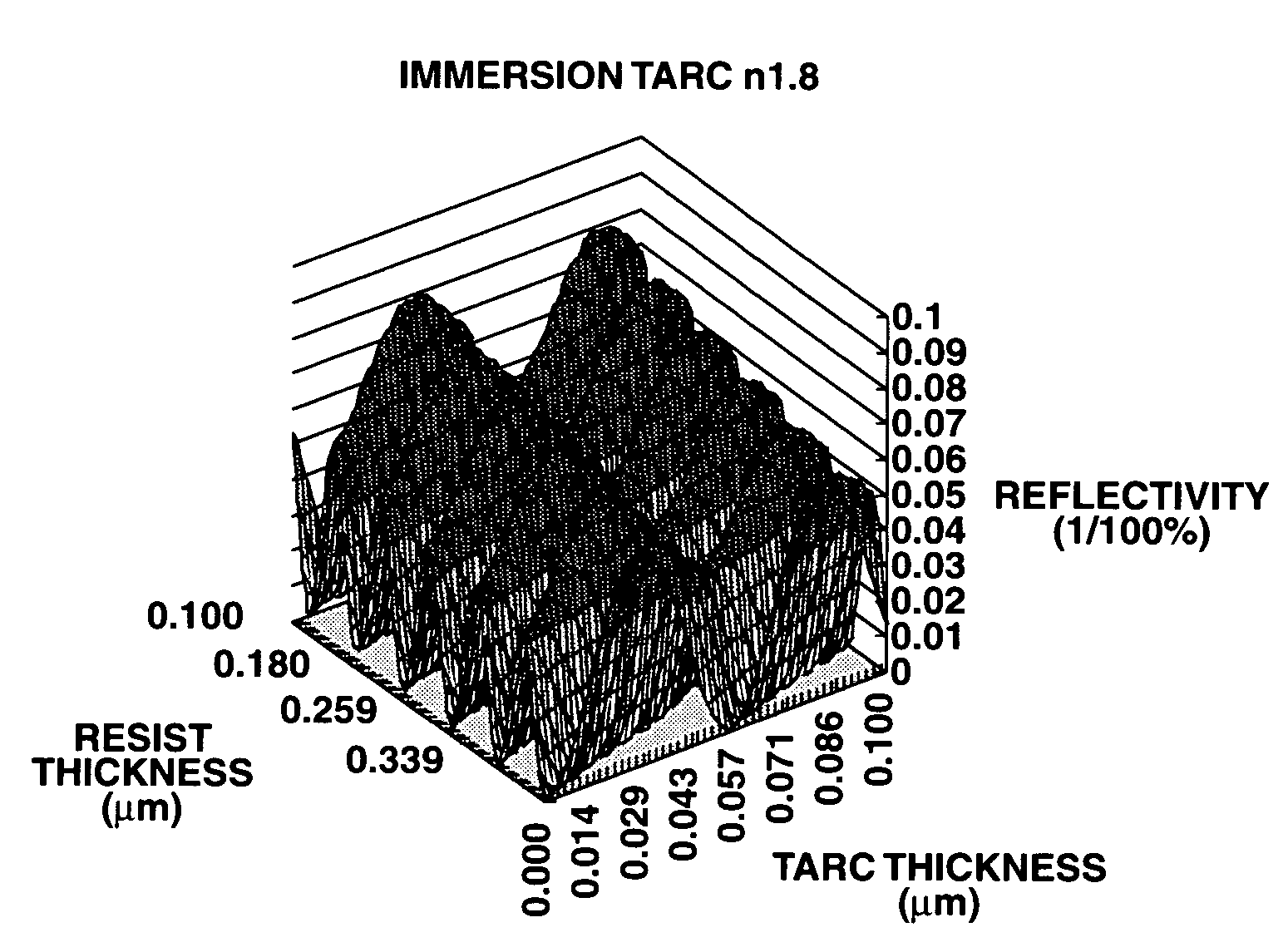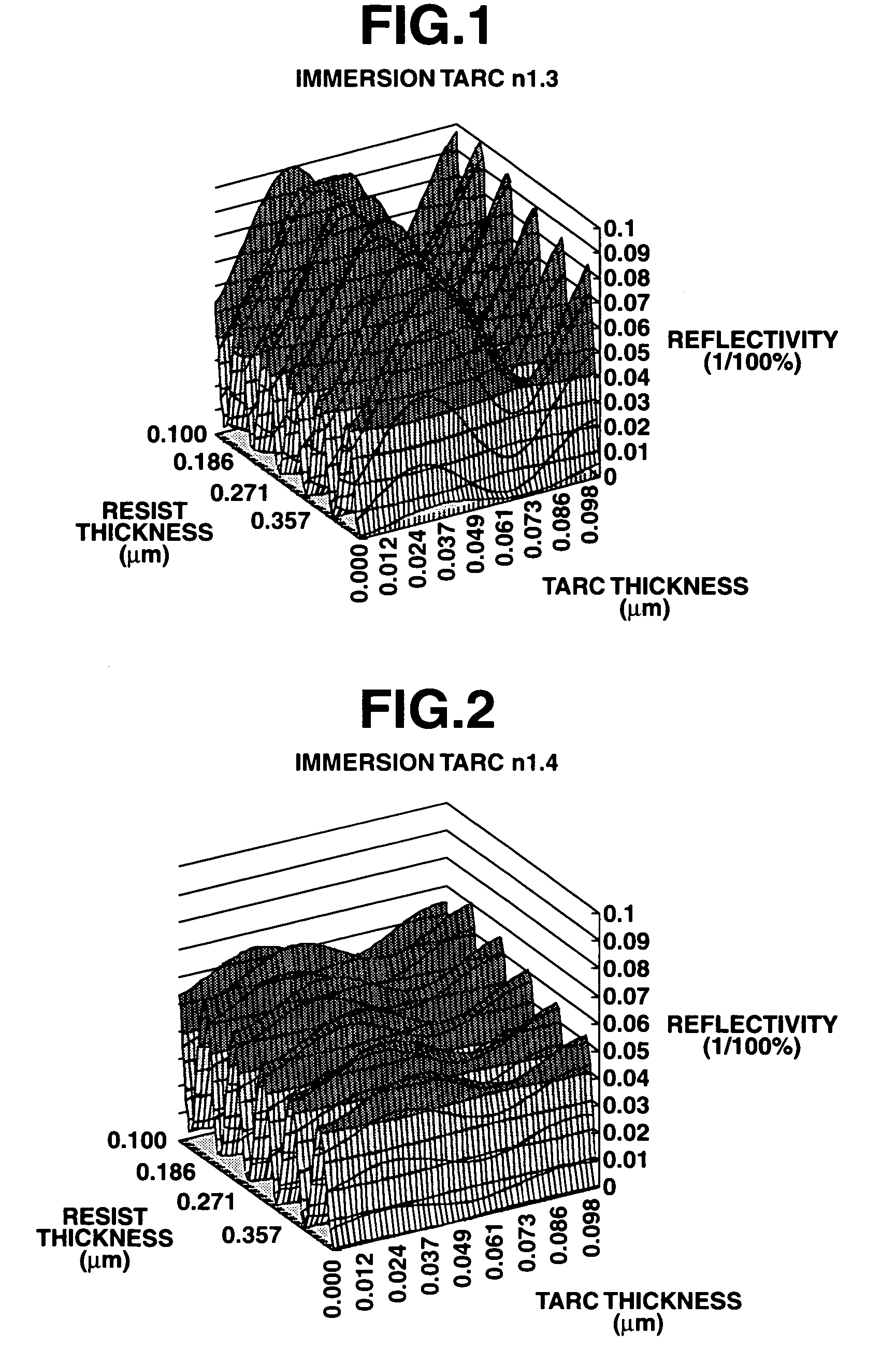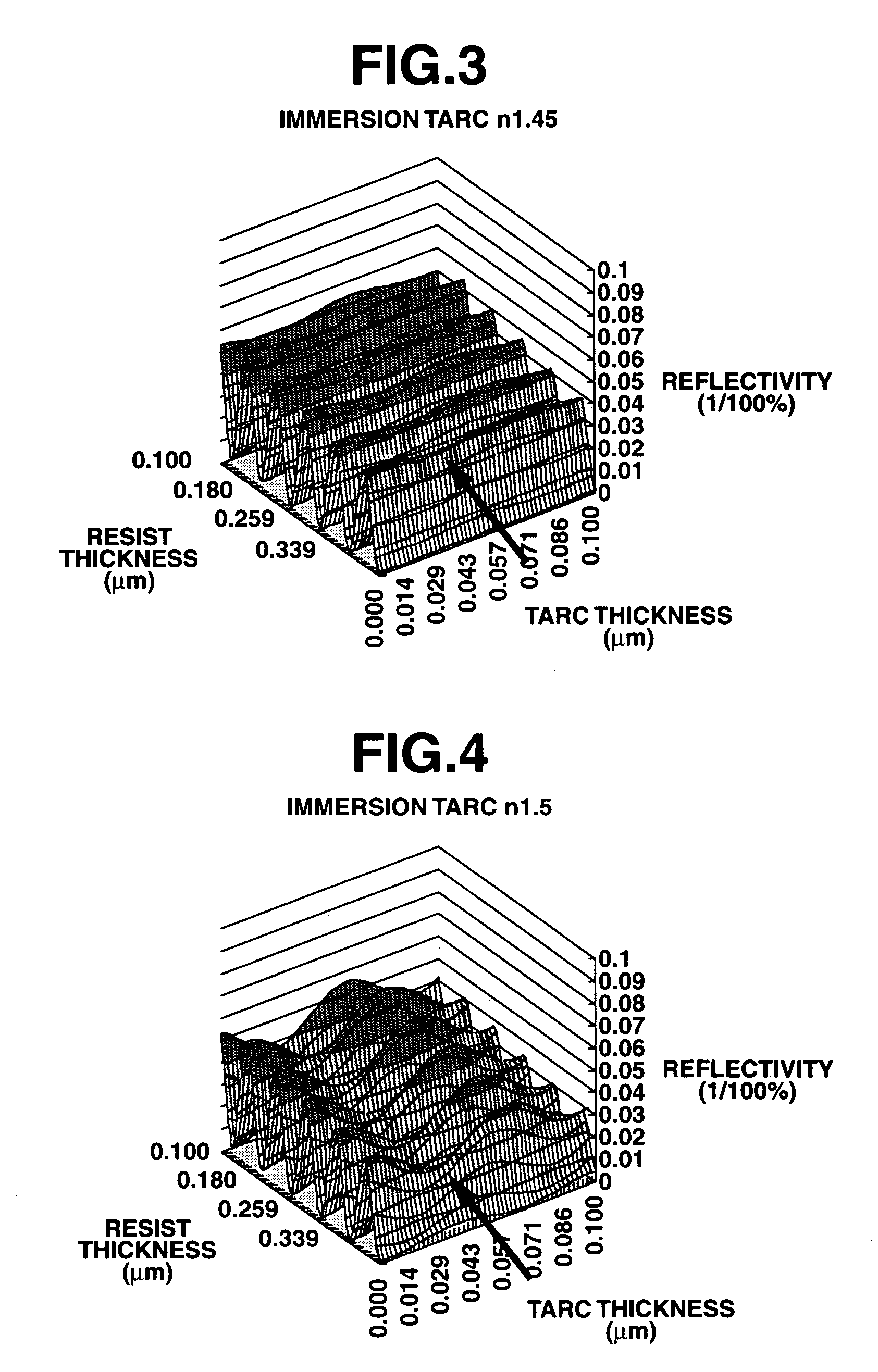Patterning process and resist overcoat material
a technology of resist and overlay material, applied in the field of immersion lithography process, can solve the problems of low resist etch resistance, high cost of scanner, and increased cost of scanning, and achieve the effect of simple process and high sensitivity
- Summary
- Abstract
- Description
- Claims
- Application Information
AI Technical Summary
Benefits of technology
Problems solved by technology
Method used
Image
Examples
synthesis example 1
[0066]A 200-mL autoclave was charged with 7.5 g of perfluoro(4-methyl-3,6-dioxaoct-7-ene)sulfonyl fluoride, 20 g of (2-hydroxy-2,2-bistrifluoromethyl)ethylnorbornene, and 40 g of methanol as a solvent. The reactor was subjected to cooling to −70° C. in a nitrogen atmosphere, evacuation to vacuum, and nitrogen flow, which procedure was repeated three times. The reactor was warmed up to room temperature, charged with 20 g of tetrafluoroethylene gas and 3 g of 2,2′-azobis(2,4-dimethylvaleronitrile) as a polymerization initiator, heated at 45° C., and held for 25 hours for reaction. The reaction solution was treated with a 5% sodium hydroxide aqueous solution for conversion to a sodium salt, then with a 3% nitric acid aqueous solution for conversion to sulfo groups. The solution was washed with water several times. A resin was isolated by crystallization from hexane. The resin, designated Inventive Polymer 1, was analyzed for composition by 1H-NMR and for molecular weight by GPC.
synthesis example 2
[0067]A 200-mL autoclave was charged with 10.5 g of allylsulfonic acid, 20 g of (2-hydroxy-2,2-bistrifluoro-methyl)ethylnorbornene, and 40 g of methanol as a solvent. The reactor was subjected to cooling to −70° C. in a nitrogen atmosphere, evacuation to vacuum, and nitrogen flow, which procedure was repeated three times. The reactor was warmed up to room temperature, charged with 20 g of tetrafluoroethylene gas and 3 g of 2,2′-azobis(2,4-dimethyl-valeronitrile) as a polymerization initiator, heated at 45° C., and held for 25 hours for reaction. The reaction solution was poured into hexane for crystallization whereupon a resin was isolated. The resin, designated Inventive Polymer 2, was analyzed for composition by 1H-NMR and for molecular weight by GPC.
synthesis example 3
[0068]A 200-mL flask was charged with 36 g of 2,2,3,3,4,4,5,5-octafluoropentyl acrylate, 12.5 g of 5-[3,3,3-trifluoro-2-hydroxy-2-trifluoromethylpropyl]bicycle-[2.2.1]hept-2-yl methacrylate, 12 g of 4-sulfobutyl acrylate, and 40 g of methanol as a solvent. The reactor was subjected to cooling to −70° C. in a nitrogen atmosphere, evacuation to vacuum, and nitrogen flow, which procedure was repeated three times. The reactor was warmed up to room temperature, charged with 3 g of 2,2′-azobis(2,4-dimethylvaleronitrile) as a polymerization initiator, heated at 65° C., and held for 25 hours for reaction. The reaction solution was poured into hexane for crystallization whereupon a resin was isolated. The resin, designated Inventive Polymer 3, was analyzed for composition by 1H-NMR and for molecular weight by GPC.
PUM
| Property | Measurement | Unit |
|---|---|---|
| wavelength | aaaaa | aaaaa |
| wavelength | aaaaa | aaaaa |
| size | aaaaa | aaaaa |
Abstract
Description
Claims
Application Information
 Login to View More
Login to View More - R&D
- Intellectual Property
- Life Sciences
- Materials
- Tech Scout
- Unparalleled Data Quality
- Higher Quality Content
- 60% Fewer Hallucinations
Browse by: Latest US Patents, China's latest patents, Technical Efficacy Thesaurus, Application Domain, Technology Topic, Popular Technical Reports.
© 2025 PatSnap. All rights reserved.Legal|Privacy policy|Modern Slavery Act Transparency Statement|Sitemap|About US| Contact US: help@patsnap.com



